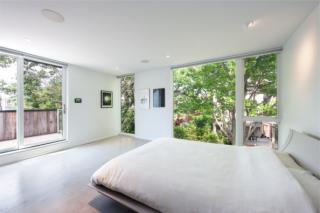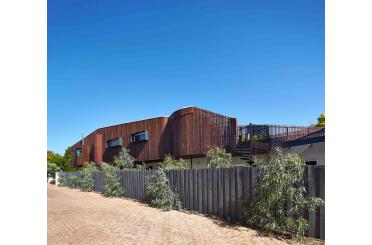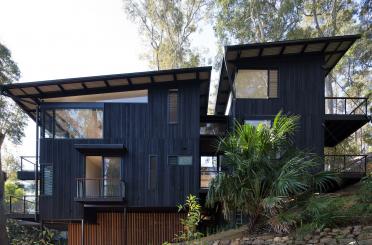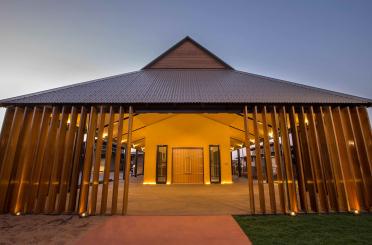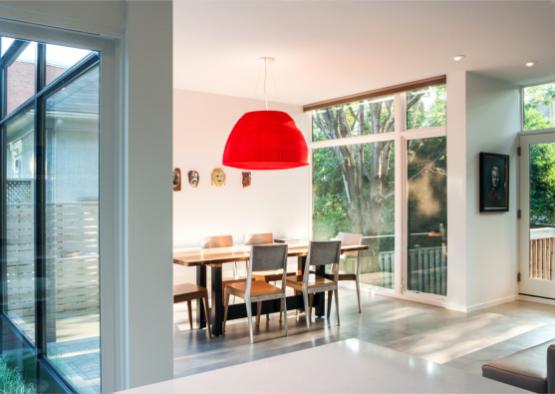
Overview
This LEED Platinum certified home is a linear composition, interrupted by the volumes of light wells, stairs and a courtyard, with strong indoor/outdoor connections.
It was critical to the homeowners and the architect that this new home was sensitive to its surroundings, with a sense of context and history to subtly integrate into the community.
The overall size and placement on the narrow block was carefully considered to avoid overwhelming the streetscape. While definitely modern in design, the use of reclaimed white oak on the exterior, a recessed carport and the landscaped green space at the front and side courtyard ensure the environmentally friendly home complements and enlivens the neighbourhood.
High efficiency heating and cooling equipment, appliances and lighting, and a compact and efficient distribution system are other features. Careful planning and execution on site reduced construction waste.
Structure
The architects say the structural design is “pretty typical” for wood framing in North America, with standard wood stud framing on a full depth concrete foundation. Most beams were multi-ply LVL, some supported by 100 mm HSS columns and reinforced concrete pads due to several concentrated point loads.
A dramatically cantilevered carport is supported by a rigid steel moment frame, which is tied into the concrete foundation walls. A similar rigid frame is used to support the floating staircase landing.
The home is built tight to the northern block line, so there are few windows along that facade. A recessed courtyard to the south allows for a large amount of glazing on the main floor. The cantilevered second storey acts as a shade, protecting the lower level from hot summer sun.
Site stewardship was carefully integrated into the design process, minimising environmental impact and water run-off. A 19% reduction in greenhouse gas emissions (compared to an average Canadian home) and an energy consumption reduction of 46% were expected, and the house achieved LEED for Homes Platinum certification.
Exterior
Using reclaimed oak siding was one of several strategies implemented to achieve a subtle integration into the historic streetscape. Most of the siding was installed horizontally, although in some areas the wood was planed to remove the weathered finish and installed vertically. This change in texture highlights the form of the house.
Installing the recycled oak barn boards presented some finishing challenges. The porous boards had been in place for over 80 years and shipping, re-planing and adding a new shiplap caused the wood to distort unpredictably.
Each board received special attention before being applied to the rain screen assembly used widely in Canada where the climate reaches all extremes of hot, cold, wet and dry. A black UV-resistant membrane was installed behind any openings (knots) in the wood to protect the air barrier beneath, and maintain a consistent aesthetic appeal.
The home is built tight to the northern site, so there are few windows along that facade. But a recessed courtyard to the south allows for a large amount of glazing on the main floor. The cantilevered second storey acts as a shade, protecting the lower level from the hot summer sun.
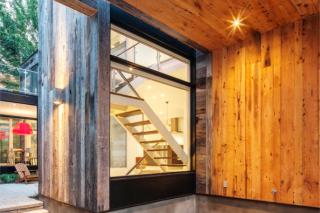
Interior
Inside, white lacquer and stained ash cabinetry flow through the interconnected kitchen, living and dining spaces.
The building’s orientation allows passive solar exposure at the east, west and south sides during winter months. Concrete floors absorb radiant heat throughout the day – releasing it as temperatures drop at night.
One of the main design challenges on the narrow block was to get the desirable amount of window glazing for aesthetic reasons, and to allow passive solar exposure. That was achieved by creating a central courtyard.
